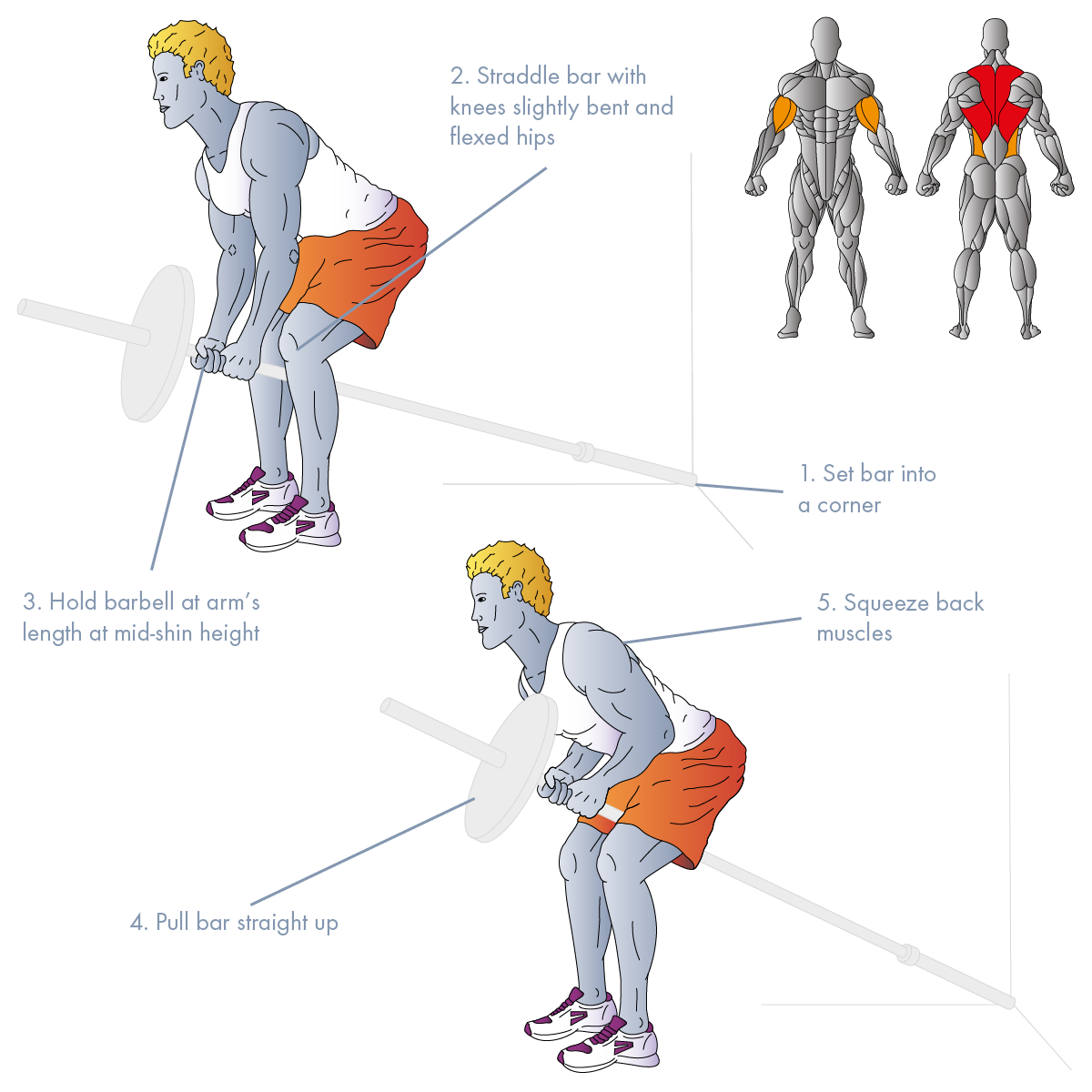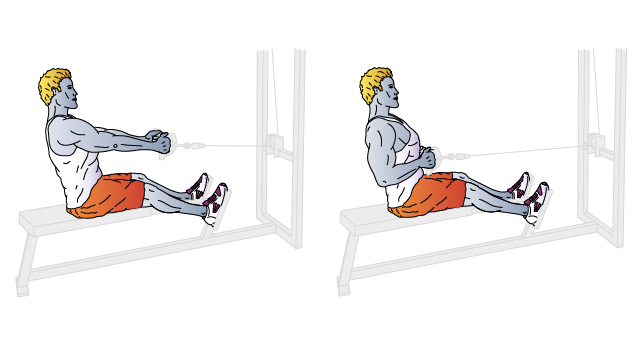T-BAR ROW

This exercise is one of the most important exercises to include for anyone who is serious about developing the classic V-taper look since it is so effective at targeting the large muscles of the back, in particular the Latissimus Dorsi. It will also help to improve your posture, which in turn can help to prevent back injuries.
Even with these benefits, many individuals opt to use machines that simulate the action of a barbell row instead because they find this lift difficult and awkward to perform. Admittedly, this lift is technically challenging since in addition to focussing on your Lats you are also required to stabilize your back and place your lower body under tension, which for some is a distraction. However, simply isolating your Lats using machines will result in subpar results because the back comprises several muscles in addition to the Lats all of which need to be worked too (which is not the case with machines) as a cohesive unit to achieve the best results.
Skill Level: Intermediate
Training: Strength
Type: Compound
Force: Pull
Equipment: Olympic Bar & Weight, Corner of Two Walls
1° Muscles: Latissimus Dorsi, Mid & Lower Trapezius
2° Muscles: Biceps, Rhomboids, Upper Trapezius, Erector Spinae
SET-UP
- Place one end of the bar in a corner.
- Load the opposite end of the barbell with an appropriate weight.
- Straddle the loaded end of the bar with your feet just beyond shoulder-width apart.
- With your knees slightly bent, flex your hips to lean forward until your torso is almost parallel to the floor.
- Grab the bar with both hands, one above the other, just behind the plates using a neutral grip (palms facing each other).
- With your arms extended, allow the bar to hang around mid-shin level.
- Look straight ahead, with your chest up and a neutral back.
- Engage your core.
EXECUTION
- Inhale.
- Exhale as you pull the bar straight up by bending your elbows until the plates touch your lower chest.
- As you pull the weight, squeeze your back muscles.
- Inhale as you slowly lower the bar to the start position, but do not let the plates touch the floor.
- At the bottom of the lift, you should feel a mild stretch in your Lats.
- Repeat for the prescribed number of reps and sets.
- Select a weight that is challenging enough but is not so heavy that you either lose balance or can’t maintain proper form.
- Maintain a neutral spine throughout. If your back becomes rounded, the force on your lower spine significantly increases, which can result in injury.
- Do not use momentum to pull the weight up.
- As you lift the weight, keep your elbows in to maximize back stimulation.
- To get the best range of motion, use smaller plates as opposed to larger ones which may touch the floor at the bottom of the lift.
- Attach a stirrup or double handle cable attachment to the end of the bar to lift the weight.
- Low Pulley Row
- Bent-Over Dumbbell Row
- Pendlay Row






